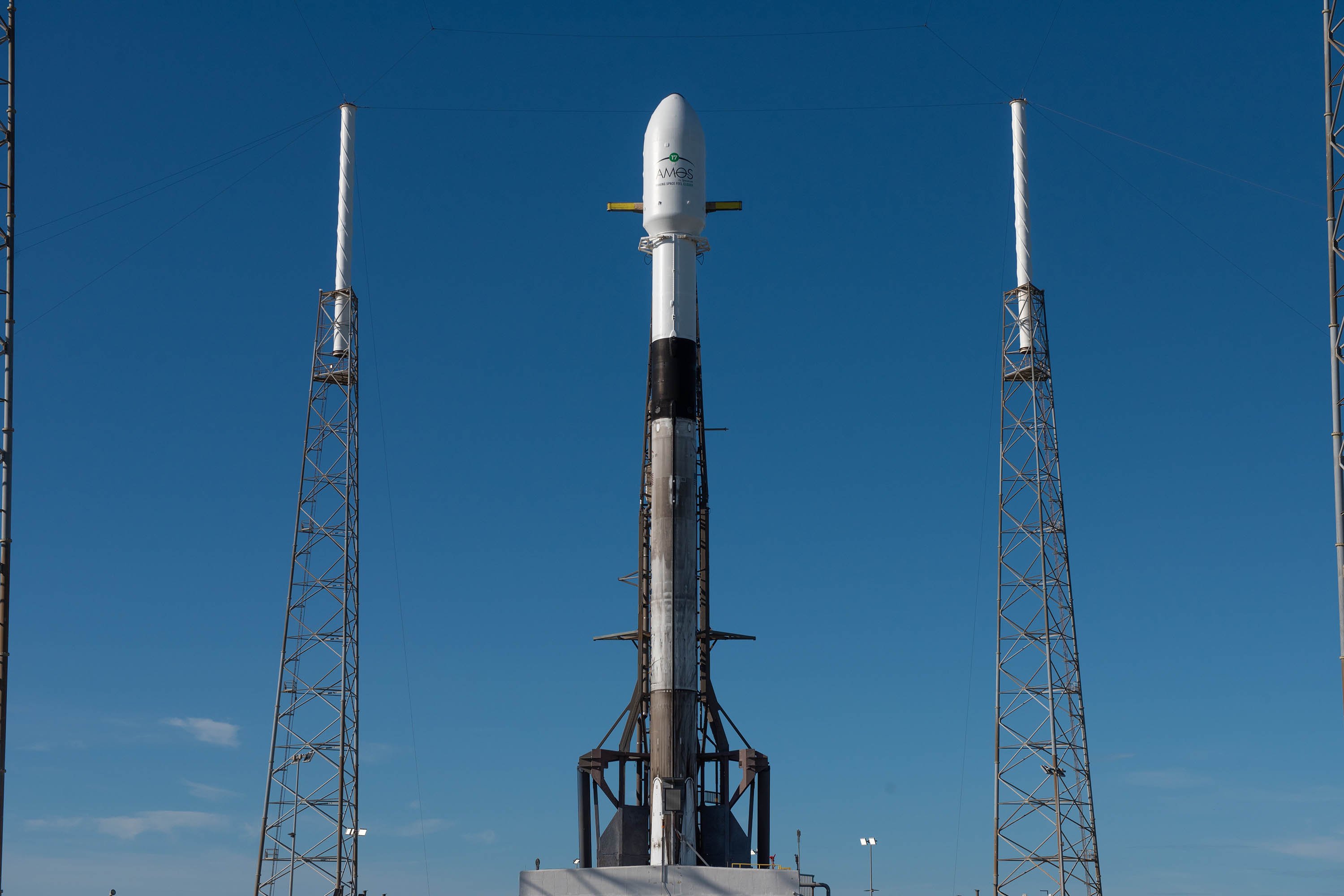
UPDATE 5:00pm EDT – SpaceX is now targeting a new T-0 of 7:23 p.m. EDT, 23:23 UTC for launch of AMOS-17, team continuing to monitor weather conditions at the Cape. Vehicle and payload still look good for launch.
ORIGINAL STORY – Almost three years since a catastrophic explosion on Space Launch Complex (SLC)-40 at Cape Canaveral Air Force Station, Fla.—which resulted in the destruction of both the Falcon 9 booster and Amos-6 payload at its tip—SpaceX stands ready to honor a long-standing commitment to Israel’s Spacecom concern late Tuesday, 6 August, with a gratis launch of the powerful Amos-17 communications satellite.
When operational at geostationary altitude, Amos-17 is expected to remain active for up to 19 years, through 2039, and will replace the failed Amos-5 satellite at 17 degrees East longitude. In so doing, it will provide strengthened Ka-, Ku- and C-band support of growing satellite-services markets in Africa, the Middle East and Europe.
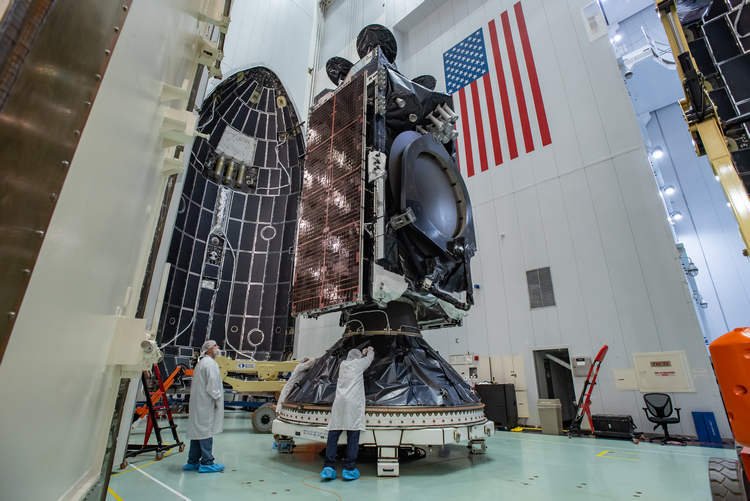
Tuesday’s mission, targeted to occur during an 88-minute “window” which extends from 6:53 p.m. EDT through 8:21 p.m. EDT, will mark SpaceX’s tenth flight of the year, coming little more than a week since the launch of the CRS-18 Dragon cargo ship to the International Space Station (ISS. Others have included the first flotilla of SpaceX’s homegrown Starlink internet-provision satellites, Israel’s ill-fated Beresheet lunar lander and two missions by the behemoth Falcon Heavy.
FOLLOW HERE FOR UPDATES AND TO WATCH LIVE STARTING AT 6:30PM EASTERN TIME!
The heavyweight nature of Amos-17—which reportedly tips the scales at close to 13,000 pounds (5,900 kg)—means that Saturday’s launch will be an expendable one, with no plan to recover the B1047 first-stage core. As such, this will be the third and swansong voyage by B1047, which previously executed a pair of Geostationary Transfer Orbit (GTO)-bound launches in August and November 2018.
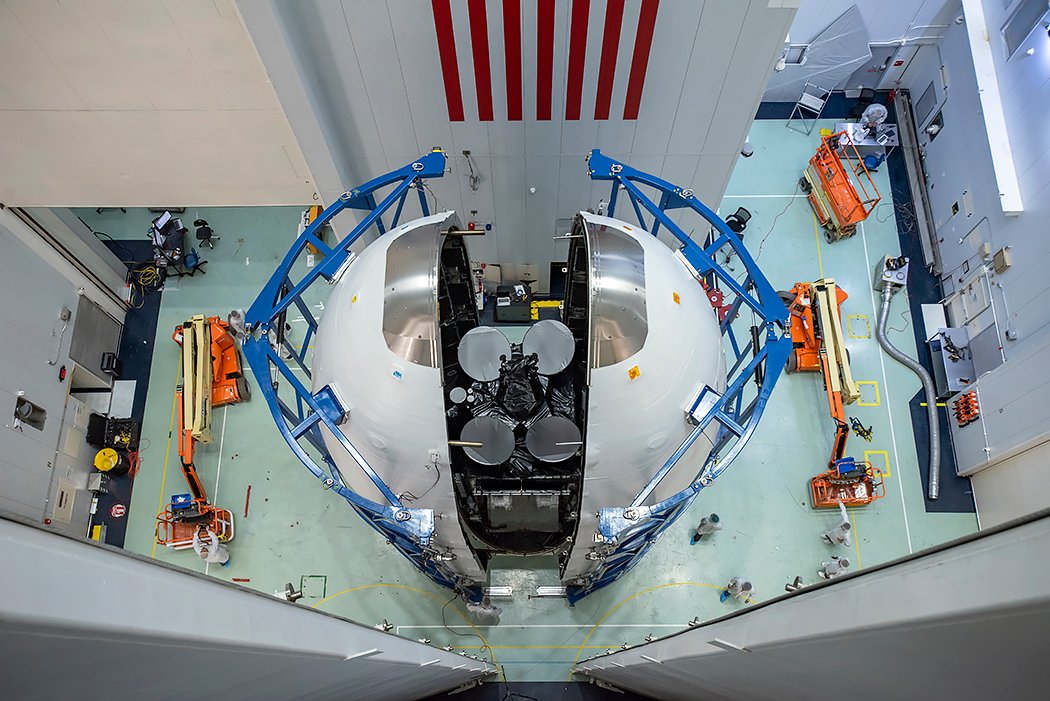
The blackened and scorched core underwent a customary Static Fire Test at SLC-40 at 8 p.m. EDT on 31 July, although SpaceX later announced that a second test firing would be conducted. “Team is setting up an additional static fire test of Falcon 9 after replacing a suspect valve,” it revealed late 1 August. “Will confirm updated target launch date for AMOS-17 once complete.” The second Static Fire Test occurred smoothly overnight on 3/4 August, before the Upgraded Falcon 9 was returned to a horizontal configuration and taken back to the nearby Horizontal Integration Facility (HIF) for the installation of the bulbous payload fairing with Amos-17. It was then returned to the pad for launch.
The satellite’s destination at 17 degrees East longitude is currently occupied by Amos-5, which was launched atop a Proton-M/Briz-M booster from the Baikonur Cosmodrome in Kazakhstan, way back in December 2011. Intended to function for upwards of 15 years with a powerful communications suite of 18 C-band and 16 Ku-band transponders, Amos-5 suffered from numerous electrical power system glitches during its early lifetime on orbit. These seriously impaired the performance of the satellite’s station-keeping thrusters and had already conspired to shave a year off its expected life span. Finally, in November 2015 all contact was lost with Amos-5 and a month later it was declared a total loss.
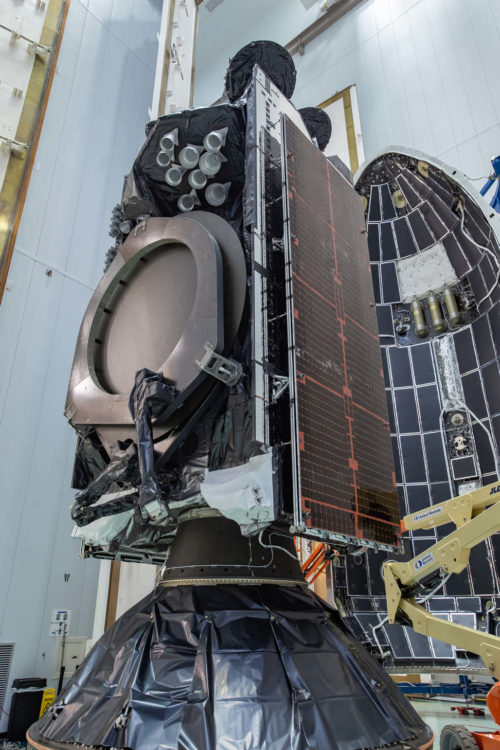
Amos-17 during final testing. Photo Credit: Spacecom
In December 2016, Spacecom announced a $161 million procurement contract with Boeing to build Amos-17, with an expected payload power output of 8.5 kilowatts and expanded capabilities to take over operations at 17 degrees East. Boasting a combination of broad regional beams and high-throughput “spot” beams to maximize throughput and spectral efficiency, Spacecom predicted that Amos-17 would prove to be a catalyst for the organization’s growth plans through the 2020s and beyond. “Amos-17 will be a multi-band, high-throughput, state-of-the-art satellite that will provide reliable solutions and offer a significant competitive advantage for our customers,” Spacecom President and CEO David Pollack remarked at the time. “The Boeing satellite will provide a great fit for Spacecom’s expansion strategy, offering an innovative design with capabilities that provide flexible service offerings to meet the growing demands of our customers.”
Less than a year later, in November 2017, Amos-17 smoothly passed through its Critical Design Review (CDR) and entered full production. Touted by Mr. Pollack as the most advanced satellite of its kind ever to operate over Africa, and laden with the latest-generation digital payload technology, in March 2018 the UK-based Cobbett Hill Earthstation, Ltd., entered into long-term agreement for C-band capacity, under which it would provide high-throughput internet, voice, data and broadcasting services to the growing sub-Saharan communications markets. Last month, Spacecom reached agreement with Nigeria-based IDS Africa for television broadcast services through Amos-17, and according to a recent Times of Israel report upwards of $58 million-worth of other contracts have been signed.
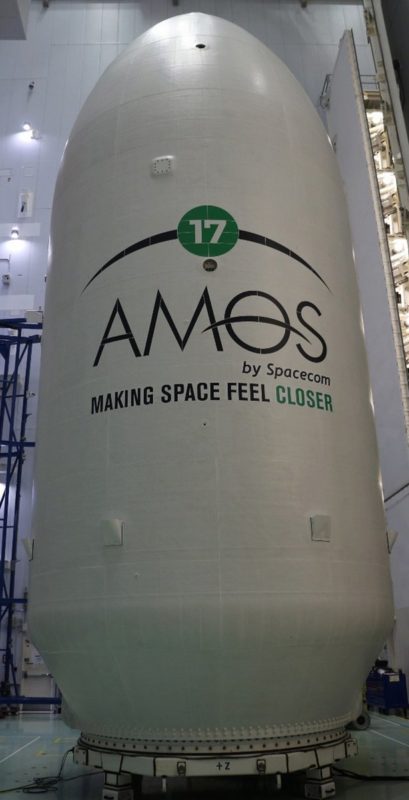
Emblazoned with Amos and Spacecom livery, this mission will exorcize the ghosts of the Amos-6 failure in September 2016. Photo Credit: Spacecom
Earlier this year, Spacecom announced that Amos-17 had entered “the final stages of its pre-launch preparation”, with launch targeted for late summer. The satellite was fully encapsulated in its payload fairing in the last week of July and the blackened and scorched B1047—teamed with a fresh second stage—was rolled out to SLC-40 on the 31st, preparatory to the first of what eventually wound up to be two Static Fire Tests.
Weighing upwards of 13,000 pounds (5,900 kg), it is reported that Amos-17 will span the length of three buses by the time its twin solar arrays are fully deployed in orbit. The satellite is based on Boeing’s highly-reliable 702MP main bus, a “medium-power” platform which can easily support its 8.5-kilowatt capacity. The tailored payload module interfaces with the 702MP bus at four points and with just a handful of electrical connectors, thereby affording it greater simplicity and cost efficiency. It also benefits from a Xenon-Ion Propulsion System (XIPS), reportedly ten times more efficient than regular liquid-fuel, which will be utilized for final orbital injection. Historically, the 702MP itself has performed well, although a number of its early missions—launched since 1999—sustained problems with the outgassing-induced “fogging” of their solar array concentrators, which led to the implementation of high-power, six-paneled triple-junction gallium arsenide cells.
The failure of the Amos-6 mission in September 2016 also carried an incremental effect upon Saturday’s planned flight of Amos-17. The satellite and its Upgraded Falcon 9 were lost in an on-the-pad explosion, which SpaceX later traced to a buckled liner in the Composite Overwrapped Pressure Vessels (COPVs) used to store the rocket’s helium pressurant. In October 2017, Space News reported that Spacecom would “use full credits from Amos-6’s unfulfilled September 2016 launch to fully cover Amos-17’s launch fees”. According to the Times of Israel, Amos-17 will require 11 days after deployment to attain its final orbital “slot”. It will take a further two days to deploy its solar arrays and communications and navigational appendages.
.
.
FOLLOW AmericaSpace on Facebook and Twitter!
.
.





